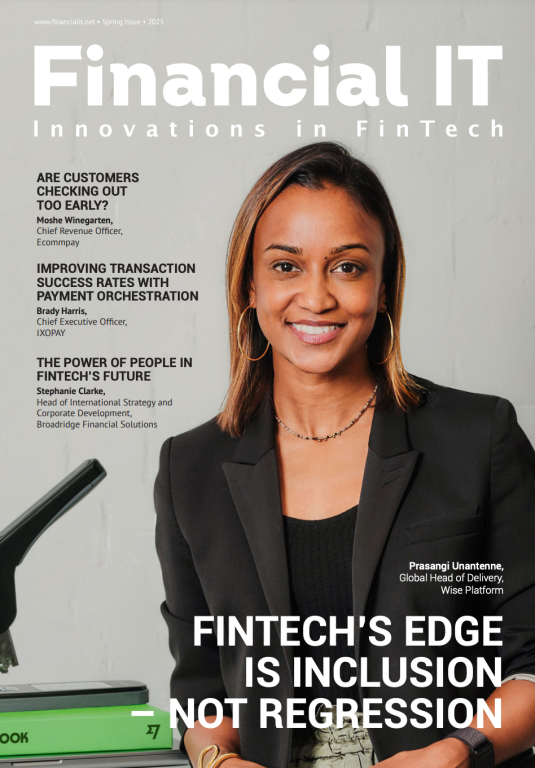Five Payment Trends To Expect In 2025

- Tommaso Jacopo Ulissi, Head of Strategy and Transformation at Nexi Group
- 03.02.2025 01:15 pm #PaymentTrends #FutureOfPayment
The pandemic accelerated the adoption of digital payments, driven by a surge in online commerce. Today, digital payment methods, especially mobile payments, have matured across Europe as consumers embrace diverse digital channels with ease.
Convenience and a wide range of options have emerged as key purchasing drivers, providing significant opportunities for innovation to ensure more inclusive and seamless payment experiences.
With this in mind, what can we expect from payments in 2025?
Mobile as a primary facilitator of payments
The smartphone is rapidly cementing its position as the number one payment form factor, for both consumers and merchants alike.
Consumers value the ability to leave their physical wallets behind, relying solely on their smartphones. Adoption will continue to grow, in part because consumers also value the added layer of security offered by mobile payments, leveraging facial or fingerprint biometrics to authenticate contactless transactions.
In 2025, merchants will increasingly adopt SoftPOS solutions, which effectively turn smartphones into trusted payment terminals. These systems will complement existing payment terminal setups, enhancing flexibility and enabling ‘roaming’ sales. SoftPOS can also serve as a back-up solution or a queue-buster during busy periods, ensuring scalability and flexibility increasing acceptance and conversion.
Digital payments enabling seamless, smart mobility
Travel payments are undergoing a revolution, with card-based payments unlocking new levels of convenience. Consumers now expect innovative solutions that support seamless journeys, and payment technology must support this transition to smart mobility.
Digital and app-based solutions are a great way to ensure travellers get a “best fare guarantee” so the consumer is charged in the most cost-effective way, based on actual travel activity, which in most cases cannot be precisely determined before travelling.
Key advancements in smart mobility payments during 2025 will include integrating payment functionality directly into travel cards and mobile wallets, mobile in-app payments, and fully automated options like license plate recognition for tolls or parking.
Sustainable solutions growing in importance
Consumers in 2025 will be more conscious of “localisation” in terms of where they conduct their online purchases, and the conditions under which products are made, also considering the CO2 emissions related to intercontinental transport.
Half of consumers surveyed by Nexi believe sustainable online shopping options are lacking and they would actively choose them if they available. Merchants who provide these options can differentiate themselves with a “green profile”, such as incorporating eco-friendly packaging and transport methods to attract and retain customers.
In the Nordics, the shift to digital receipts is an example of how payment innovation can directly reduce environmental impact, offering convenience and reducing waste. Payment providers like Nexi are also integrating sustainability into value chains to reduce environmental impact. By digitalizing processes and fostering innovation, this will help businesses unlock their ESG (Environmental, Social and Governance) potential while achieving their own sustainability goals
Verticalized, personalized payments
Catering to diverse customer preferences is critical in today’s market. Payments will play a pivotal role in shaping retail and hospitality experiences in particular, moving beyond transactional utility to become a key driver of customer engagement.
Payment solutions will become increasingly embedded into industry-specific software, enabling businesses to streamline operations and leverage value-added services that can transform how they operate. For instance, a restaurant can integrate reservation systems, table management, post-sale analytics and payments into a single platform.
In retail, online and physical environments are merging into a seamless, omnichannel experience, where a customer may browse items online, reserve them, and complete the purchase in-store. Integrated payment systems ensure consistency across channels, with no discrepancies in pricing, discounts, or loyalty rewards.
Frictionless payments are critical in hospitality settings, where delays or complications can create negative experiences. For example, table-side payment systems and contactless options will reduce wait times and enable customers to split bills easily, leaving a lasting positive impression.
CBDCs: not ‘if’ but ‘when’
We’ve been talking about CBDCs for a few years now, and 2024 saw significant momentum build: so far, 11 CBDCs have been launched and most European countries are engaged in initiatives and/or developing projects.
From Nexi’s unique perspective, being involved in relevant working groups at a pan-European level and supporting the European Central Bank (ECB) in developing front-end prototypes, we can say that the Digital Euro is approaching fast and could be launched as soon as 2027.
In the short-term though, 2025 will be a year of continued advancement, with new user research and experimentation, innovation partnerships to test and explore other potential use cases, and the development of a methodology for setting digital euro holding limits.
CBDCs are not intended to replace other forms of money, but rather to complement them, stimulating further digitization of payments, driving innovation, promoting financial inclusion, and broadening access across the consumer payments ecosystem.
[1] Nordic Payment Report data: 76% of Nordic consumers use some form of mobile payment in physical sales locations. Italian payment data: 78% increase in use of mobile-based payments in Italy.





















